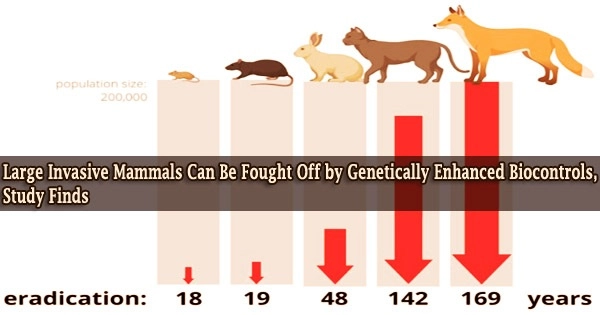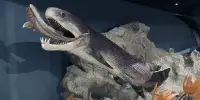On native plants and animals, invasive alien mammals can have disastrous effects that result in the extinction of entire species and significant environmental change. Researchers are searching for alternatives to traditional control techniques like poison baiting, trapping, or hunting because these techniques are currently impractical on a large scale.
Genome engineering using CRISPR is frequently referred to as the “magic bullet” for eliminating pests. Studies have thus far only concentrated on mice, despite the growing interest in the development of this technology for invading species like mice, rats, rabbits, feral cats, and foxes.
Researchers have been debating whether and how quickly larger mammals might be exterminated with the use of genome editing technologies.
A group of researchers from the University of Adelaide created a mathematical model that can mimic the effects of gene drives on animal populations at a landscape size in order to answer these concerns.
Their study, which was published in the open-access NeoBiotajournal, is the first to provide a timeline for the eradication of long-living alien creatures.
The simulated gene drive uses CRISPR-Cas9 technology and “molecular scissors” that are placed into the Y-chromosome to target and cut up the X-chromosome at the appropriate time during meiosis, allowing only sperm carrying the Y-chromosome to function and successfully fertilize the egg.
The probability of eradicating feral cats with gene drives is identical to flipping a coin, 50/50; and provided that the coin lands on the right side, it would take about 140 years to get rid of them. The probability of eradication is higher for foxes, but the wait is even longer.
Dr. Aysegul Birand
In this manner, sons born to drive-carrying males should only have the molecular scissors on their Y-chromosome. The population will shrink as females become less common and have fewer progeny over several generations.
Although it has been successfully created and tested to reduce cage populations of malaria-carrying mosquitoes, this “X-shredder” drive has not yet been created for animals. The X-shredder drive might possibly remove mice, rats, rabbits, feral cats, and red foxes on a landscape-scale, according to the model, although the likelihood of this happening and how long it would take to do so varies substantially.
The X-shredder drive’s capacity to wipe out a population of 200,000 members of each species was examined by the researchers.
“CRISPR-based gene drives offer novel solutions for controlling invasive alien species, which could ultimately extend eradication efforts to continental scales,” they concluded.
Rodents and rabbits are examples of minor pests that the technique might be effective against. For mice, rats, and rabbits, the estimated time to eradication is 18, 19, and 48 years, respectively; 90% population suppression is often achieved in around half of those durations.
The findings, however, imply that gene drives are not a universally applicable solution and may not be as effective in larger animals like cats and foxes.
“The probability of eradicating feral cats with gene drives is identical to flipping a coin, 50/50; and provided that the coin lands on the right side, it would take about 140 years to get rid of them,” says Dr. Aysegul Birand, part of the research team. “The probability of eradication is higher for foxes, but the wait is even longer.”
















